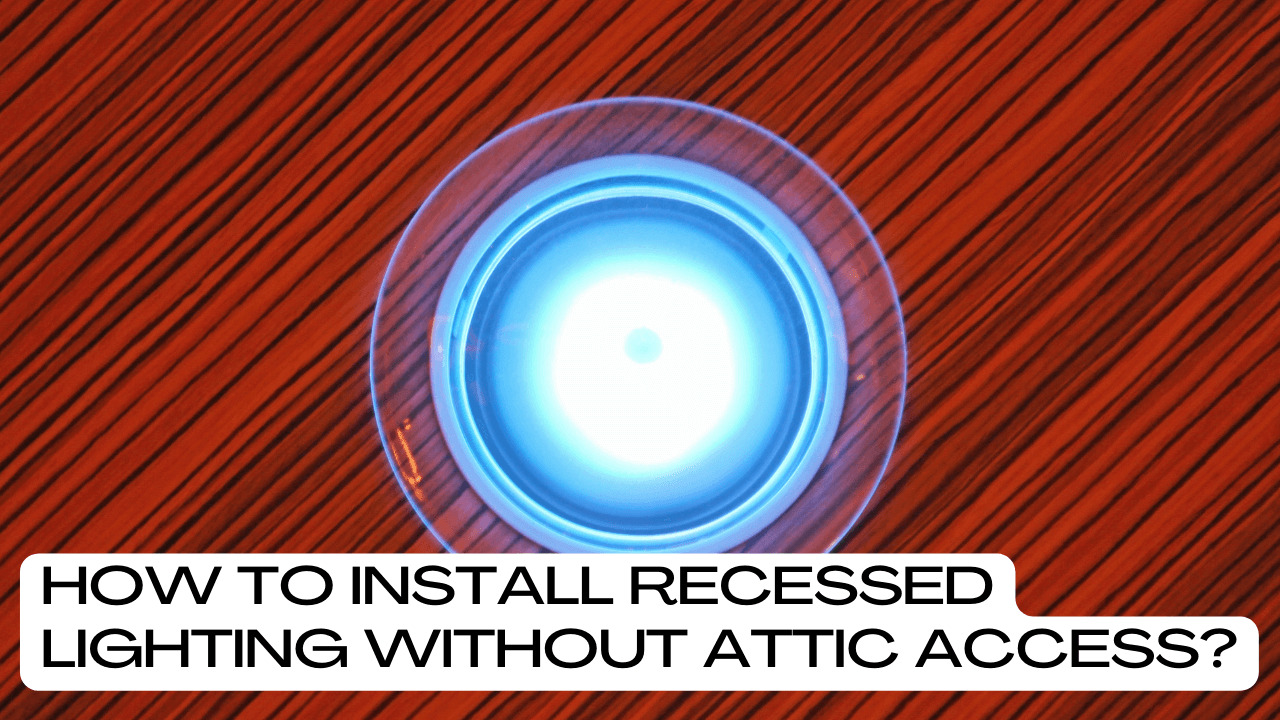Recessed lighting, often known as can lighting, brightens a room, highlights a feature, or creates a mood. It’s a great way to bring light into specific areas of a room, especially if it’s a big one, or to make a small space appear larger. It has a cleaner, more modern appearance than other ceiling light fixtures.
Recessed lighting is becoming increasingly popular since it improves both the illumination and the value of a home. Installing recessed lighting without access to the attic is a simple DIY job for the capable homeowner.
However, when rewiring a fixture or appliance, you should proceed with caution. One of the advantages of recessed lighting is its low cost of installation.
Even though a room normally requires more recessed lights. However, the overall cost will remain minimum.
Table of Contents
Things To Consider Before Installing Recessed Lighting
When rooms are on the first level of a property, or there isn’t access to the attic, you’ll need to develop a different technique to install recessed lighting. Even if you don’t have attic access, you may take precautions to ensure proper installation.
First and foremost, you must consult with a professional before you begin. If you’re untrained, dealing with anything electrical can be risky. Make a blueprint before you start. Then gather all of the required items.
Buying recessed lighting can be a little perplexing, but some helpful hints are available. Keep in mind that completing this project will take a significant amount of time and effort. However, if you choose to install recessed lighting yourself, you’ll save much money and get the style you’ve always wanted for your room.
Steps To Install Recessed Lights Without Attic Access
If you don’t have attic space and want to convert your recessed lights, these simple instructions will guide you through the process.
Before starting any job, make sure you have all of the tools and supplies you’ll need to install the pot lights. This not only saves you time but also prevents recessed light installation delays. You’ll need the following items to install your pot lights:
- Pencil
- Cordless drill
- Stud finder
- Measuring tape
- Screwdriver
- Drywall saw
1) Switch Off The Power Breaker
At the main circuit breaker, turn off the electricity to the room. To check if an electrical outlet is safe to use, insert a circuit tester plug into it. Make sure you’ve turned off the right breaker with a circuit tester.
2) Determine The Recessed Light’s Location
Decide where you want your pot lights before making permanent adjustments to your ceiling. Drawing a schematic of your ceiling will help you plan out your locations.
Avoid identifying places where joists, support beams, or other internal elements would interfere with the recessed light installation when measuring light placements. Trace each place onto your ceiling using the light’s housing.
3) Drill The Holes
Drill a hole in the center of the traced area to begin cutting the hole for the recessed light. Cut towards the traced line using a keyhole saw before cutting on the traced line.
Cut out each opening in your ceiling after the outlines are traced. Start by drilling a hole in the center of your circle, and using a keyhole saw, cut your way to the traced line.
4) Start Wiring
Locate a nearby electrical outlet to which you will connect your light switch and recessed light. Remove the faceplate from the outlet or junction box. Remove the screws that hold the outlet to the electrical box, then carefully take the outlet out to expose the wires.
Locate the light switch in the center of the recessed light and the electrical outlet. Locate the light switch in the electrical box on the wall. Drill a hole in the center of the traced area, then use a keyhole saw to cut it out.
5) Use Fish Tape At The Ends Of the Cable
Run the electrical cable from the recessed light hole to the light switch hole through the ceiling. Pull the cable’s end out of the wall using fish tape. Wire cutters are used to cut the cable. Also, cut the end of the cable that hangs from the recessed light opening in the ceiling.
The electrical cable should be inserted into the hole. After that, slip the new electrical box into the light switch hole and press it up until the clamps click into place. Connect the electrical cable to the remodeling recessed light housing’s cable clamp.
Hire Professionals If You Are Not Familiar With Installation Process
The light installation is a complex procedure involving basic electrical understanding and serious effort. It is essential to consult an electrician for your safety unless you are comfortable with electrical components. The cost of recessed lighting fixtures varies greatly.
If you have some prior knowledge and follow the methods above, installing pot lights without attic access is a simple task. Hire a certified electrician to assist you if you have no prior expertise working with the wiring. This is critical since most homeowners’ insurance policies do not cover damage caused by improper wiring installed by a licensed technician.
Conclusion
Recessed lighting can lighten a dimly lit room, add flair, and help you create the mood you want. Before starting your project, be sure you have a plan and have all of the resources you’ll need. Remember, knowing how to choose recessed lights and not deviating from the specifications.
Otherwise, you risk poor lighting and severe overheating. During the installation process, be cautious. This is a cost-effective DIY project, but only undertake it if you are confident in the procedure and prepared to put in the effort.





